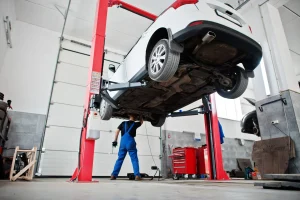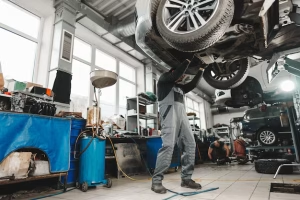Car repairs can feel like a necessary evil, often draining your wallet and leaving you dependent on professional mechanics for even simple fixes. But what if you didn’t always have to take your car to the shop? With a little guidance and the right tools, you can tackle many basic car repairs on your own—saving money, time, and even the environment along the way.
This guide is for the busy drivers, car enthusiasts, and eco-conscious consumers who are ready to gain independence and learn how to manage simple car repairs. If that sounds like you, read on for practical tips, essential tools, and beginner-friendly hacks that will empower you to take control of your car maintenance.
The Benefits of DIY Car Repairs
DIY car repairs not only save you money but also come with several other meaningful benefits.
1. Save money and time
Routine car maintenance and minor repairs can quickly add up, costing the average driver hundreds or even thousands of dollars a year. Taking on some of these repairs yourself can keep more of your hard-earned money in your pocket.
Furthermore, you won’t have to rely on scheduling appointments at crowded auto shops. You’ll save precious time by being able to perform certain fixes in your own driveway or garage.
2. Empower yourself
Mastering the art of DIY repairs gives you a newfound confidence and control over your vehicle. You’ll learn more about how your car works, which can help you better understand what’s happening when something goes wrong. It’s an empowering—and even fun—way to feel connected to your vehicle.
3. Help the environment
DIY car repairs can also reduce waste and energy consumption. Fixing parts like filters, brake pads, and bulbs yourself eliminates the need for unnecessary professional packaging, transport, and labor energy usage, making it a more eco-friendly alternative. Every small step in cutting down waste matters when it comes to preserving our planet.
Essential Tools Every Car Owner Should Have
Before you jump into car repairs, having the right tools on hand is essential. The following items form a basic repair kit that every car owner should consider investing in:
- Socket and wrench set – Useful for loosening and tightening bolts.
- Screwdrivers (flathead and Phillips) – Essential for a variety of small fixes.
- Jack and jack stands – Necessary for safely lifting your car.
- Mechanic’s gloves – Protect your hands from grease and cuts while working.
- Torque wrench – Ensures your bolts are tightened to the correct level.
- Oil filter wrench – Ideal for removing tough-to-reach oil filters.
- Car battery tester – Helps check the health of your battery before it dies.
- Pliers and adjustable wrenches – Perfect for gripping and adjusting car parts.
These tools offer versatility for a wide range of repairs and will pay for themselves over time as you use them.
Simple DIY Car Repair Hacks
Are you ready to roll up your sleeves? These beginner-friendly repairs require minimal tools and offer major savings.
1. Changing Oil and Filters
Regular oil changes are critical to keeping your engine running smoothly. Doing it yourself is easier than you might think and can save you about $40–$70 every time.
- What you need: Oil filter wrench, new oil filter, fresh motor oil, funnel, oil pan.
- How to do it:
- Raise your car using a jack and secure it with jack stands.
- Place the oil pan under the drain plug, unscrew it, and allow the old oil to drain.
- Remove the old filter with an oil filter wrench and replace it with the new one.
- Reattach the drain plug and pour in the fresh oil.
2. Replacing Brake Pads and Rotors
Worn brake pads are not only noisy but also dangerous. Replacing them yourself can cost around $50–$100, compared to $150–$300 at a shop.
- What you need: Jack and jack stands, wrench, new brake pads, brake grease.
- How to do it:
- Remove your wheel using a wrench.
- Unscrew the caliper bolts and slide off the caliper.
- Remove the old brake pads and fit in the new ones.
- Reattach the caliper and put the wheel back on.
3. Fixing Minor Dents and Scratches
Got a small dent or scratch? Don’t rush to an auto body shop just yet—the fix might be surprisingly straightforward.
- Minor dents:
- Use a plunger to pop out minor dents on smooth surfaces.
- For smaller dents, try rubbing dry ice over the area to contract the metal.
- Scratches:
- Clean the area and fill minor scratches with touch-up paint or scratch-removal fluid.
4. Replacing Headlight Bulbs
Don’t compromise night driving visibility just because your headlight went out—changing a bulb is simple and costs as little as $20.
- What you need: A new bulb, gloves to handle it.
- How to do it:
- Remove the old bulb from the back of the headlight assembly.
- Insert the new bulb carefully without touching it with bare hands (to avoid damage).
Safety Precautions and When to Seek Professional Help
While DIY car repairs can be rewarding, safety should always come first. Keep these precautions in mind before you start tinkering with your car.
Safety Tips
- Always use jack stands when working under your vehicle—never rely solely on the jack.
- Wear proper safety gear, such as gloves and goggles.
- Work in a well-ventilated area, especially when dealing with fluids or sprays.
- Read your car’s manual before attempting new repairs to understand the specific requirements and limitations.
Know When to Call a Professional
Certain repairs, such as engine diagnostics, transmission issues, or advanced electrical problems, are best left to experienced mechanics. Attempting complex repairs without proper knowledge or tools could cost you more in the long run.
Take Control of Your Car Maintenance
Whether you’re dealing with worn brake pads, a burnt-out bulb, or scratches on your bumper, DIY car repairs offer a practical way to save money while feeling more connected to your vehicle. By starting with these simple hacks, you’ll gain confidence and gradually build more advanced skills.
At the same time, you’ll be doing your part for the environment by reducing waste and energy use. It’s a win-win for your wallet and the planet!
Have your own DIY car repair story or a tip you’d like to share? Drop it in the comments below—we’d love to hear from you!


